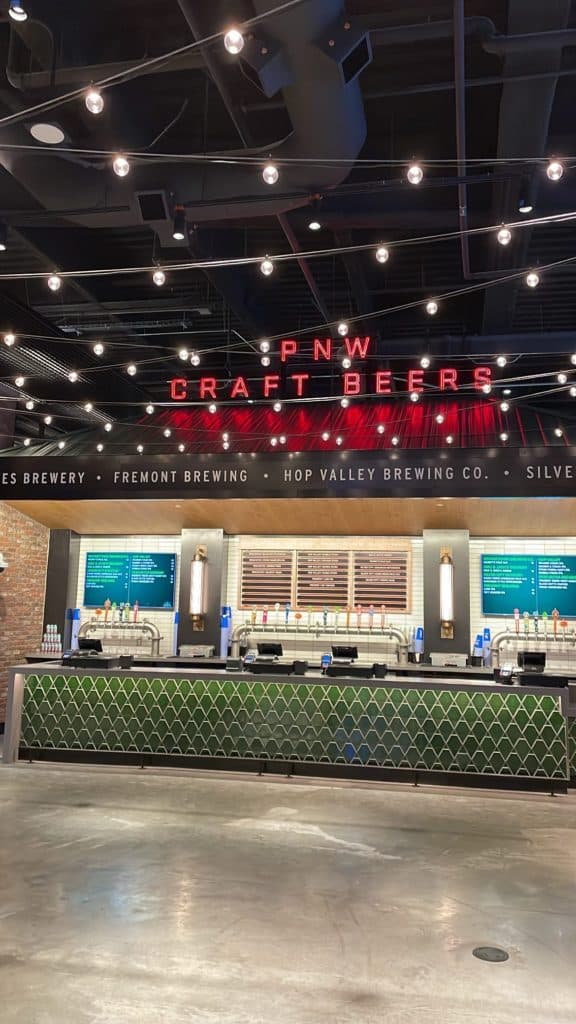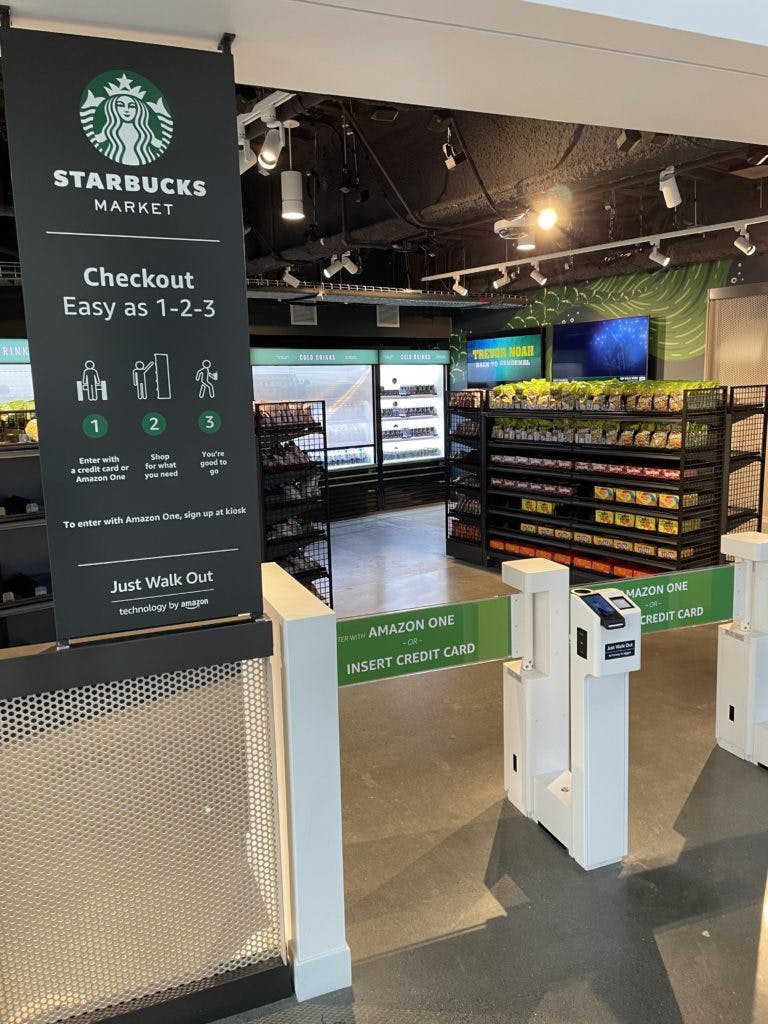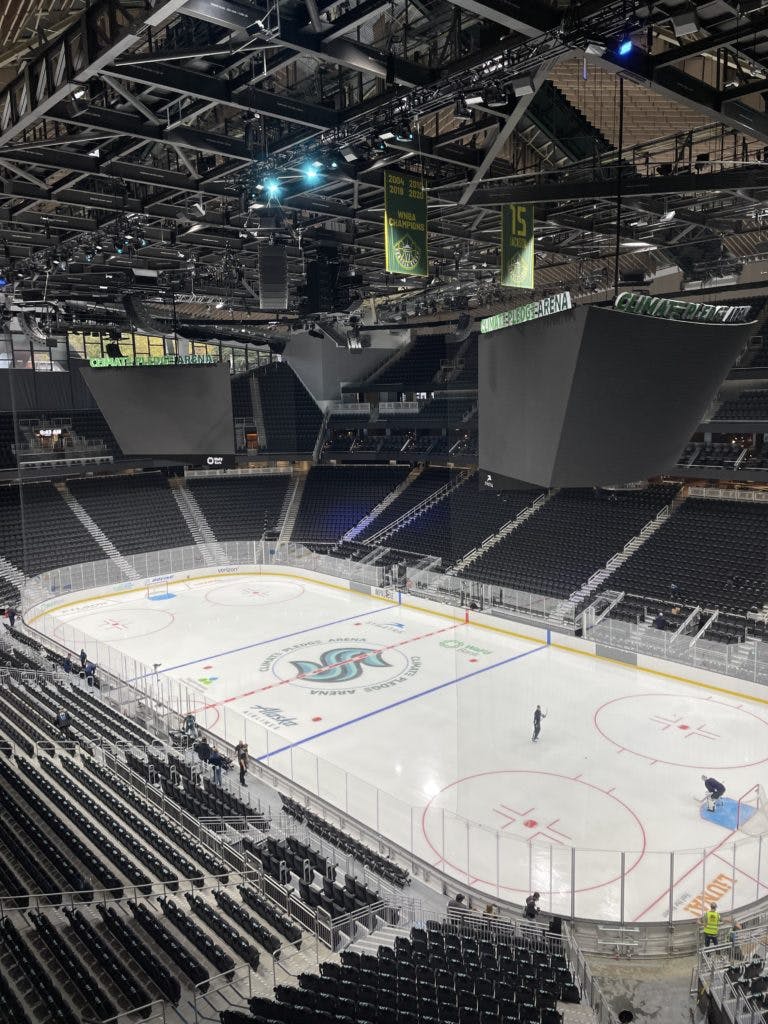Seravalli: Releasing The Kraken, NHL Reels In ‘White Whale’ In Seattle
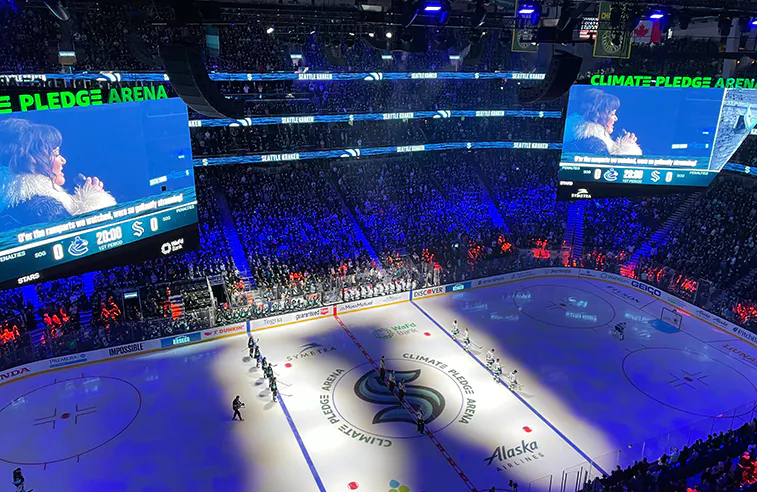
SEATTLE — The Kraken’s tentacled brand was designed to celebrate this city’s storied maritime history, to connect the curiosity and the mystery of what lies deep beneath the surface.
When you think about it, the Kraken’s long-awaited arrival in Seattle on Saturday night – three-plus years in the making, after more than two decades of NHL plotting – was also slightly mysterious.
After all that time, careful crafting and construction – would the experience match the imagined moment?
Well before Vince Dunn set off an authentic Washington State Ferry horn to signal the Kraken’s first goal in frenzied Climate Pledge Arena’s history, we found our answers over a three-day stay in Seattle.
Seattle: Completing the NHL map
Kraken general manager Ron Francis isn’t much of an outdoorsman, but he hears there’s world-class fishing spots and hiking trails throughout the Seattle area. He’d eventually like to find one of those trails – if he ever finds the time.
“You know, it’s just a beautiful place to live,” Francis said, after completing the move from North Carolina. “I get up in the morning and I look out the window at Mount Rainier. And out the other window I’ve got the Cascades [Mountains], I drive to work and I’ve got the Olympics over there, too. In the summertime, it was just day after day of beautiful sunshine. There’s just a lot to do and the people have been great.”
After only a few hours in Seattle, what you notice – aside from the slew of Kraken sweaters, which have made for one of the most successful jersey launches in pro sports history – is the rise of new skyscrapers and the sprawling traffic, signs of a city exploding in size and wealth.
Home to Amazon, where CEO Andy Jassy is part of the Kraken ownership group, Seattle is one of the fastest growing metropolitan areas in the country. Seattle proper’s population grew 21 percent over the last decade, according to U.S. census data.
But Seattle was on the NHL’s radar long before 2010. Little known fact: Seattle was first awarded an NHL franchise back in 1974 to begin play in 1976-77. It’s been an elusive chase ever since.
NHL commissioner Gary Bettman likely first pondered the addition of Seattle way back in 1995, in just his third season as commissioner, before noting on Saturday that officials then declined to include the NHL in KeyArena renovation plans – which removed the ability to put down ice in the then 33-year-old building.
Since then, Bettman has probably been in contact with four different mayors and an untold number of prospective owners looking to expand in Seattle. There were as many as three different parties considering an application for expansion when the Vegas Golden Knights were granted a franchise in 2016.
To add to the deep sea motif, it probably would not be unfair to say that Bettman officially reeled in the NHL’s ‘white whale’ market when he took the microphone to rile up fans on Saturday night before puck drop.
“The fan response has been phenomenal. This is an engaged community. But I’m not surprised, Seattle is a great sports town,” Bettman said. “We couldn’t be happier or more excited. Have an even larger presence in the Pacific Northwest and a geographic rivalry with Vancouver, we think is great … We think the league is stronger by our presence here.”
With Bettman at the helm, the NHL has expanded from 24 to 32 teams. In all, nearly a third of the league is playing in a new spot – including relocations to Phoenix, Colorado, Carolina and Winnipeg.
The NHL has placed a clear emphasis on being first to the table, whether it was being the first major professional sports league to enter the Las Vegas market, to become the only major pro presence in Raleigh or Columbus. As Bettman pointed out Saturday: “Seattle was lacking in winter sports. We were more than happy to be in a position to pick up the void and more than adequately fill it.”
The addition of Seattle provides a feeling of completeness to the NHL’s ever-evolving map. It’s a feeling that extends beyond simply four balanced divisions of eight teams. Most every major metro box on the continent is now checked.
But good luck getting Bettman to confirm that notion. Even if the NHL isn’t expanding to 34 teams any time soon, there is always seemingly a fire to put out in Arizona with the unending Coyotes arena drama.
“In my job, nothing is ever complete,” Bettman said. “Whether it’s expansion or the game or rules or technology, we’re always looking ahead. I don’t envision any expansion in the foreseeable future. But nothing is ever complete. That’s just the nature of the beast.”
Business has been a beast in Seattle.
Between the 32,000 season ticket deposits in the first 24 hours or the thousands of jerseys that have flown off the shelves at record pace, the Kraken projected to be among the top third in league revenue in their inaugural season. They may finish among the top five.
That’s led Francis to ask aloud what many have been thinking: “It’s interesting, once you make the decision to go forward, and based on what’s happened – you kind of sit there and go, why did it take so long?”
Bettman answered: “The issue for us has always been the arena.”
Into the Deep
You don’t even need to buy a ticket to grasp the modern engineering marvel that is Climate Pledge Arena. Just walk up to one of the historically-designated glass window panes at street level and watch the NHL gladiators smashing into each other 100 feet below street level. Then imagine what that outdoor plaza will look and sound like during a Kraken playoff game.
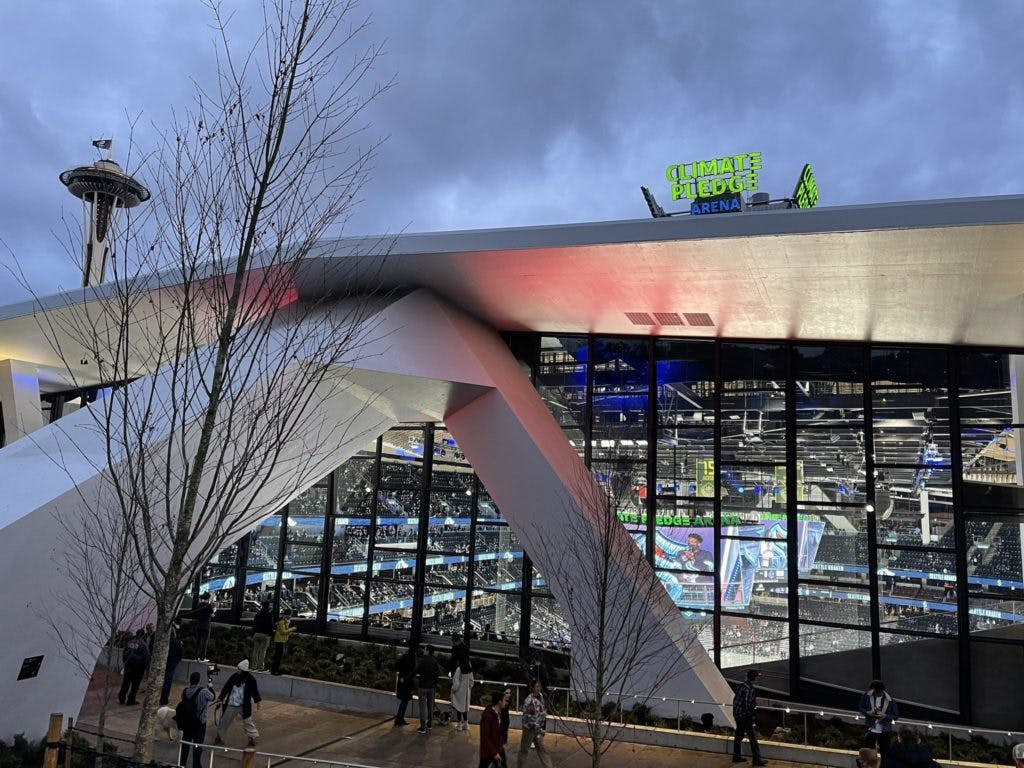
“It’s just spectacular, seeing it from when it was a hole in the ground,” Francis said. “Glass at both ends. The different version of the twin [jumbotrons]. The uniqueness, the steepness of the seats going up. I don’t think there’s anything like it.”
There isn’t. Not in the NHL. In a word, Climate Pledge Arena is breathtaking. Really, you should buy a ticket to experience the game-changing amenities and most importantly, the attention to detail.
“There are 17,000 people right on top of you,” Kraken coach Dave Hakstol said. Seattle royalty were included among them, with Seahawks quarterback Russell Wilson sitting alongside his wife Ciara. SuperSonics legend Shawn Kemp was back under the same intimate roof where he took Seattle to the 1996 NBA Finals. And pop star Macklemore grabbed the mic to pump up the crowd.
There are 80,000 living plants adorned to the wall on one concourse, opposite an outstanding beer hall. The opposite concourse is covered from ceiling to floor in LED panels which simulate an underwater scene, with the mysterious Kraken lurking.
From the roof catchments which deposit the omnipresent Seattle rain into cisterns to be used to make the ice to the seamless ‘grab and go’ technology where fans can buy a beer by simply selecting one from the cooler and walking out without having to wait in line to pay – nothing was overlooked in this $1.15 billion privately financed palace.
“The detail they put into it. The amenities we have. The money they spent,” Jordan Eberle said. “They didn’t spare any expense.”
No expense was spared on the Kraken Community Iceplex, either, the team’s suburban practice facility that is the new gold standard in the league. It feels uniquely … Seattle. There is a full-fledged Starbucks overlooking one of the three much-needed sheets added to the community’s youth hockey footprint.
But Bettman said Climate Pledge Arena has “taken things to another level.”
The rest of the NHL has already noticed. Philadelphia Flyers chairman Dave Scott was spotted on a private tour from Oak View Group founder Tim Leiweke on Saturday morning, gathering ideas as the Flyers embark on the final phase of their $300 million transformation of Wells Fargo Center.
“Spectacular,” was how Scott described Climate Pledge Arena. “From the clean, modern look with lots of glass as you enter the arena, to all they’re doing with sustainability. The sound system was incredible at the Coldplay concert on Friday night. I was especially impressed with the combination of technology and food service, where they are taking ‘grab and go’ self service to the next level for fans and patrons.”
And to think: some of the nearly 4,000 construction workers on the job were still knocking out punch lists on the morning of the game, a massive project that was somehow complete on-time despite a global pandemic. It was a race to the finish.
With two concerts aggressively scheduled before the Kraken even carved Climate Pledge ice for morning skate on Saturday, fans received only a scaled-down version of what’s to come from the star-studded game presentation group Seattle lured away from the Vegas Golden Knights. There was no time to practice.
Seattle stumbled slightly with mixed reviews on a banner retiring No. 32 pre-game as the NHL’s 32nd franchise, also celebrating the 32,000 season-ticket deposits that were received on Day 1.
But they will more than make up for it with the on-ice storytelling and presentation that’s to come from the creative genius of Jonny Greco, Lamont Buford and Ayron Sequeira.
We’re told to expect a physical Kraken-like sea creature ’emerging’ from the depths of the ice, slithering through the arena air and visual elements reflecting off those famous glass panes.
‘We’re Seattle. We’re Different.’
Kraken radio voice Everett Fitzhugh was one of the first handful of team employees hired, starting with an interview before the franchise had a name and identity. He was working for the ECHL’s Cincinnati Cyclones when he received an inquiring email from CEO Tod Leiweke – one that Fitzhugh initially assumed was a prank.
Fitzhugh, 32, grew up in Detroit and became a diehard fan of the Edmonton Oilers because that season in 2000-01 when watching the late CBC feed of “Hockey Night in Canada,” he noticed five Oilers looked like him: Mike Grier, Georges Laraque, Joaquin Gage, Sean Brown and Anson Carter.
“That was huge. Growing up, I was told and shown that hockey wasn’t a for a young, Black kid from the city,” Fitzhugh said. “Every Saturday when I could see those guys on my TV, it let me know that there was a place for me and that I belonged in the game of hockey.”
Now, after Fitzhugh became the first Black full-time broadcaster in NHL history (since joined by former NHL player J.T. Brown on Seattle’s television side), he works in a Kraken organization that consciously sought out employees from other groups historically underrepresented in hockey front offices.
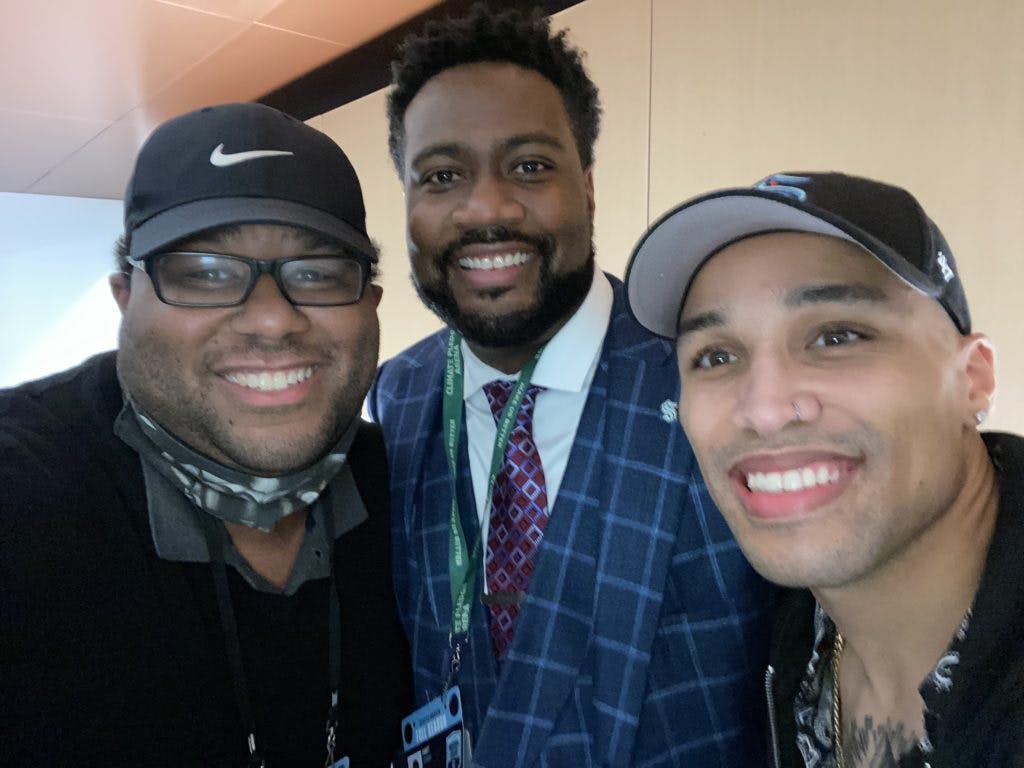
“We’ve said from Day 1: We’re Seattle. We’re different. It’s a priority that we’re hiring the best person available, it doesn’t matter sort of gender, race, religion, you name it,” Francis said. “It’s been exciting to be part of that.”
On any given day, Fitzhugh could cross paths with the first full-time female scout in hockey in Cammi Granato, Japanese-American born video coach Tim Ohashi, or director of hockey strategy and research Alexandra Mandrycky.
And that’s without leaving the hockey operations department.
“I joke about it sometimes, that I’ve seen more Black and more minority co-workers in meetings today than I’ve seen in my entire career. Period,” Fitzhugh said. “This isn’t just a line for the Seattle Kraken, it’s not PR. It’s something that we fundamentally believe in – to try and change the face of the game. I don’t think I ever set out to be the first. But I think you owe it to yourself to be that person you never had, that 9-year-old boy from South Seattle who is watching on TV and says hockey is not for me. I want to be the person to say, ‘Not so fast. You belong. Your voice belongs.’ We want those people to know they have a home at Climate Pledge Arena. We embrace you. We welcome you.”
If the Kraken wanted to show they’re truly opening new doors to hockey in the community, the early dividends were evident in Game 1. Ryan Clark, the first Black-Hispanic national hockey writer who also covers the Kraken for The Athletic, scanned the intimate bowl around him.
Clark said the 17,151 faces looking back at him made for the most diverse crowd he’d ever seen at a hockey game in the United States.
Time to get Kraken
From the logo to the facilities to marketing the brand, there is little doubt the Kraken nailed nearly every single detail as they’ve emerged from the depths after three years of careful collaboration and construction.
The jerseys even pop on the ice, a perfectly Pacific Northwest palette of colors befitting the Boys from the Puget Sound.
“When opposing teams come here and they see the city, the people, the facilities, people are going to want to come to play here,” Eberle said. “This is going to be one of those markets that players want to be. It’s such a unique city. So far, I’ve loved every second of it.”
There is a ‘cool’ factor to the Kraken that’s hard quantify or qualify without seeing it in person. Yes, Seattle is hockey’s shiny new toy, but the shine wears off quickly in the NHL without success. Just ask Columbus or Florida. The Predators weren’t ‘cool’ until they won consistently, which happened to coincide with an explosion of the country music scene and Nashville as a tourist destination.
The Kraken are off to a 1-4-1 start. Like almost any expansion franchise, the Kraken’s first month together has been a learning experience – on the ice, in the locker room and in the front office.
“It’s little things that people don’t even realize, like who runs the music in the locker room,” Eberle said. “Warmups, you watch NHL teams that have been together forever, they’re in synch. Guys are stretching in certain spots every time. When you have 25 new guys, it takes a while to figure it out.
“When you get traded to a new team, individually you have to figure it out. When you have 25 new guys, nobody knows what to do. There’s no seniority because no one’s been here.”
Francis said the Kraken are still evaluating that 25-man group. There have been positives and negatives in the first two weeks of season.
“I like our effort. You know, I think they like each other as a group,” Francis said. “We’re still trying to see what we have, who we have, where each individual’s strengths are, who works well with each other. And they’re still trying to figure each other out and figure out a new system. There’s a lot of things going on.”
For now, Francis can put aside designing dressing rooms, choosing carpet colors and assigning parking spots – all things on his agenda up to this point. He can focus on putting a winning product on the ice.
No one is expecting a Vegas-like run to the Stanley Cup Final in Year 1. That’s unfair and unrealistic.
But the Kraken will only stay cool if they’re consistently competitive in the long haul, a fact not lost on Francis and Seattle’s inaugural collective. A high bar has been set by the organization off the ice. Now it’s up to the players to match it.
Captain Mark Giordano said: “It’s on us to go out there and perform, because we’ve been given every resource possible.”
“You always want to win,” Francis said. “We’re trying to establish our own identity. It takes time. But if we go out there and work our butts off every night, we can have more success than not, and be something our fans can be proud of.”
